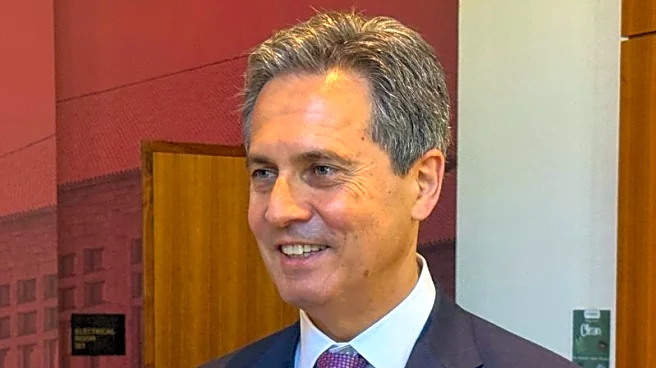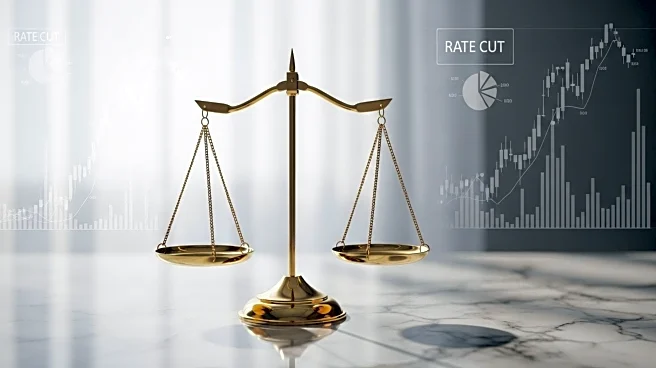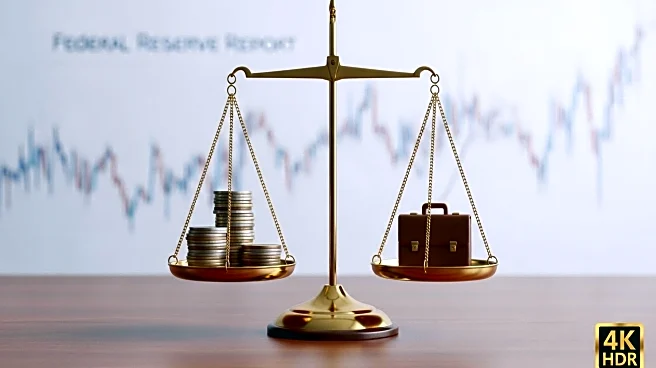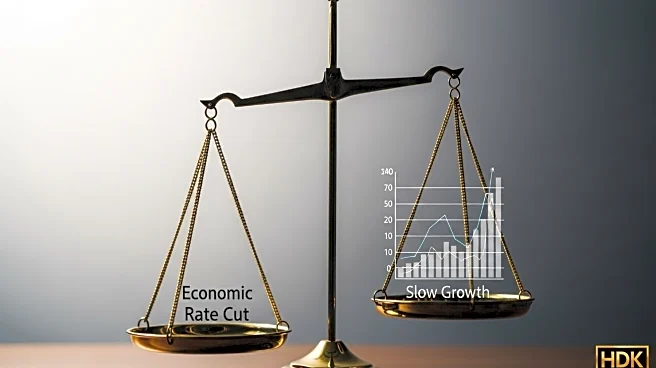What is the story about?
What's Happening?
The Federal Reserve is poised to cut its benchmark interest rate in September, driven by a weaker-than-expected jobs report. The report revealed slower hiring and an increase in the unemployment rate, prompting market participants to anticipate a rate cut of at least 25 basis points, with some forecasting a potential 50 basis-point reduction. This decision comes as Fed officials weigh the need to lower rates to support the job market against the risk of inflation, which has been exacerbated by tariffs. The CME Group's FedWatch tool indicates a strong expectation for a rate cut at the upcoming Fed meeting on September 16-17.
Why It's Important?
The anticipated rate cut by the Federal Reserve is significant as it aims to address the faltering job market, which added fewer jobs in August than expected. Lower interest rates could stimulate economic activity by reducing borrowing costs, potentially boosting hiring and consumer spending. However, this move also highlights the ongoing challenge of balancing inflation control with employment support. Industries reliant on borrowing, such as housing and consumer goods, may benefit from lower rates, while sectors sensitive to inflation could face increased pressure. The decision reflects the Fed's dual mandate to maintain low inflation and high employment.
What's Next?
The Federal Reserve's decision to cut interest rates is expected to be finalized at its meeting on September 16-17. Stakeholders, including investors and businesses, will closely monitor the Fed's actions and statements for indications of future monetary policy directions. The rate cut could lead to further adjustments in financial markets, influencing stock prices and bond yields. Additionally, political leaders and economic analysts may react to the Fed's decision, considering its implications for economic growth and inflation management.
Beyond the Headlines
The Federal Reserve's potential rate cut underscores the complex interplay between economic indicators and monetary policy. It raises questions about the long-term impact of tariffs on inflation and the broader economy. The decision also highlights the Fed's role in navigating economic uncertainties and its influence on global financial markets. As the U.S. economy faces challenges, the Fed's actions could set precedents for future policy decisions, affecting both domestic and international economic landscapes.
AI Generated Content
Do you find this article useful?














